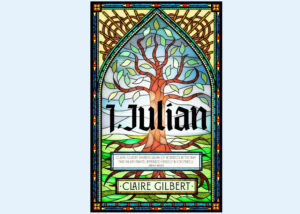If the Bible is a story, it is also something more: It’s a book that dares to make an authoritative claim on life. Between the poems and proverbs and parables, a portrait is taking shape of who God is and what exactly God desires. The Bible suggests that to learn to walk with God and love the things that God loves is to begin to live in sync with the world’s true design.
This description of the Bible—an introduction to God and to the shape of the “with-God” life—is something rather different from “basic instructions.” From time to time, I fantasize about possessing a handbook that would answer every problem with a clear, three-step process. Secure a great husband, according to the Book of Ruth:
- Don your best dress.
- Sneak up to his bed after he’s spent a long evening partying with friends.
- Uncover his feet and lie down and then wait to see what he says.
Check out Ruth 3 to catch that story.
Of course, the trouble with instruction manuals is how quickly they go out of date. A 2018 atlas could offer you a detailed guide for driving from New York to Los Angeles. The instructions might be absolutely perfect on the day they were laid out. But what happens when traffic patterns change? Or a tree falls in the way? Or when cars are replaced by hovercrafts? The precise sequence of turns that once would have carried you safely to your destination could now lead you far astray, even send you skidding into wreckage. The goal, the ultimate destination, remains exactly the same. But the ability to get there safely requires a certain ingenuity, the ability to navigate previously unknown obstacles and adapt to new terrain.
The Bible’s opening sequence in Genesis 1, which describes God’s creation of the world, could leave some readers with the impression that everything is finished, tied off, completed—like a highway laid down once never to be altered again: “God said, ‘Let there be light.’ And so light appeared.”
If this is the case, turn-by-turn directions would seem the perfect communication tool. But Genesis 2 immediately complicates this picture of creation by depicting God playing in the mud of the newly minted Earth. Humans are on the scene now, but God remains in the world as well, and the creative work is still unfolding.
The scene in Genesis 2 always reminds me a bit of kids tinkering in a sandbox. God forms a creature and hands it to Adam and asks, “What do you think we should call it?” Adam replies, “It’s a spiny lumpsucker!” And that becomes its name. Presumably this is about the moment God decides it might be time to bring Eve around, if only for a second opinion.
In Genesis 2, human beings are not merely passive observers of God’s work in the world; they are active participants in the creative vocation of God. They—and we—are assigned the task of cultivating soil that is pregnant with divine possibilities. (“The Lord God took the human and settled him in the garden of Eden; to farm it and take care of it.”)
This vocation, given humanity in Genesis 2:15, is not mechanical, assembly-line working—that of stamping identical cogs pumping out of a machine. It’s creative, nurturing work. It’s the vocation of a gardener who tends living, growing things—a vocation not just of preservation but of emergence.
The number and complexity of tasks and the variability of conditions demand that a gardener have a far more intimate knowledge of her soil than a finite list of instructions would ever contain. The gardener must understand her soil’s potential and vulnerabilities enough to recognize potential new threats, adapt to changing conditions and cultivate flourishing in all seasons. What she needs is a mind that is attuned to the nature of the earth itself.
This is why, I believe, the Bible takes a much more ambitious approach to human formation than a simple rule-book could provide. God is not shaping automated drones but artists in the image of a Master. Now, an artist must begin by learning the essential rules of her craft. A sculptor won’t get far if she denies the nature of clay, refusing to keep it moist, firing it in ways that crack it. Similarly, there are basic rules to how God’s world operates—principles of moral gravity, if you will—whose defiance is quite costly. Infidelity, to word or relationship, breaks things. Webs of deception trap the weaver. The Bible points out some of these essential principles so we can work with the nature of our clay rather than against it.
But rules alone are not enough! An artist needs imagination, a vision of what can be. The Bible is more than a story only—it’s a story moving us and the world somewhere. It’s a revelation of who God is, of what God loves, of how the world is shaped. It’s an invitation to a relationship, an apprenticeship in God’s creative, nurturing vocation.
The Bible provides the essential information we need to creatively lean in. We were made for so much more than paint-by-number religion. We were made to cast the dreams of God on many different canvases, in all the diverse shapes and vibrant, Spirit-saturated colours of true life. The Bible trains our eye for the divine aesthetic and then sends us out with a brush in hand to paint with the help of the Master.
Between the lines of its obscure laws and strange and unexpected stories, the Bible forms inspired imagination for the God-shaped possibilities of the world. In it, we learn what God’s activity has looked like in the past so that we will recognize it when it is unfolding right in front of us. We discover what God sounds like so that we can hear when God continues to speak. We learn what God loves so we can be alert for opportunities to stir that delight. We learn what God dreams of so we can begin to live that dream. The Bible shapes imagination for how God can be encountered in ordinary life and for how we can cooperate with God in encouraging the flourishing of all creation.
It turns out that the strange particularity of the Bible’s address—God’s word to this person, in this place, at this time, in this specific situation—is powerful precisely because it is the particular that shapes imagination for the universal. The same God who talked to ancient farmers about paying their day labourers before sunset so their families would have dinner that night (Deuteronomy 24:14-15) has something to say as well to modern office managers about how they care for the needs of the temp.
God is at work not just everywhere but somewhere in particular. God tends not just every bloom but this one, in its unique soil and shape and condition. We are being formed by the Bible to join God not just in general but in the specificity of genuine care, in all the “hereness” and “newness” of the particular bit of creation with which we have been uniquely entrusted.
In Romans 12:2, an early Christian leader named Paul writes: “Don’t be conformed to the patterns of this world, but be transformed by the renewing of your minds so that you can figure out what God’s will is—what is good and pleasing and mature.” The patterns of the world run across our news feed every minute of the day—cycles of fear, greed, isolation and violence that all the intellect of all the nations can’t seem to find a way beyond. But those who are shaped by the Bible are formed for a more beautiful imagination.
We imagine a community where there are no poor because what belongs to one is a gift for all. We imagine conflict where enemies defend each other’s interests. We imagine marriage—and sex—characterized by mutual submission, where each partner guards the other’s joy as if it were their own. We imagine a justice defined not by matching wounds but by the healing of what’s broken. We dare to imagine a genuine friendship, true companionship with God.
Through Scripture, we are shaped, page by page, into the imagination of Christ. We learn to see past the surface of the broken soil around us to the small but potent seeds of divine possibility, which have been planted within and are waiting to be cultivated.
This vision of faithful living is so much bigger than a rote performance of a finite set of religious rules. The Bible’s invitation is to a life of creative, risk-taking engagement. Its movement drives us toward a relationship still unfolding and a story still being written—in us, in our children’s children and in generations yet to come.
Meghan Larissa Good is teaching pastor at Trinity Mennonite Church in Glendale, Ariz. This appears as Chapter 4 in her book The Bible Unwrapped: Making Sense of Scripture Today, © 2018 by Herald Press. Used with permission. The Bible Unwrapped is this fall’s CommonRead selection. For more information or to purchase, visit commonword.ca/go/1807.
For discussion
1. Where and when do you read the Bible or hear it read? What parts do you find easier to read and which are more challenging? Why do you think biblical literacy is declining?
2. Meghan Good says the Bible should not be viewed as a handbook of basic instructions. What does she say are the limitations of a rulebook? Do you agree? What are the implications of viewing the Bible as stories about God rather than as a rulebook?
3. The Bible gives us a portrait of “who God is and what exactly God desires,” so that we can live faithfully in our ordinary lives, says Good. How do you respond to the idea that Christians are creative “artists,” responsible to determine a Christ-like response to the modern world?
4. Good says that “there are basic rules to how God’s world operates—principles of moral gravity,” that we need to know so we can “work with the nature of our clay.” What are some of these essential principles? Are they timeless or do they change? Can you think of denominations that have essential principles different from yours?
—By Barb Draper
Further reading from our Fall 2019 Focus on Books & Resources:
Journal connects Korean Anabaptists around the globe
Book explores healthy masculinity
‘I realized I had been duped!’
CommonRead connecting churches from coast to coast
Overcoming the siren diversions of our digital age
Part memoir, part devotional reading
2019 List of Books & Resources









Leave a Reply
You must be logged in to post a comment.